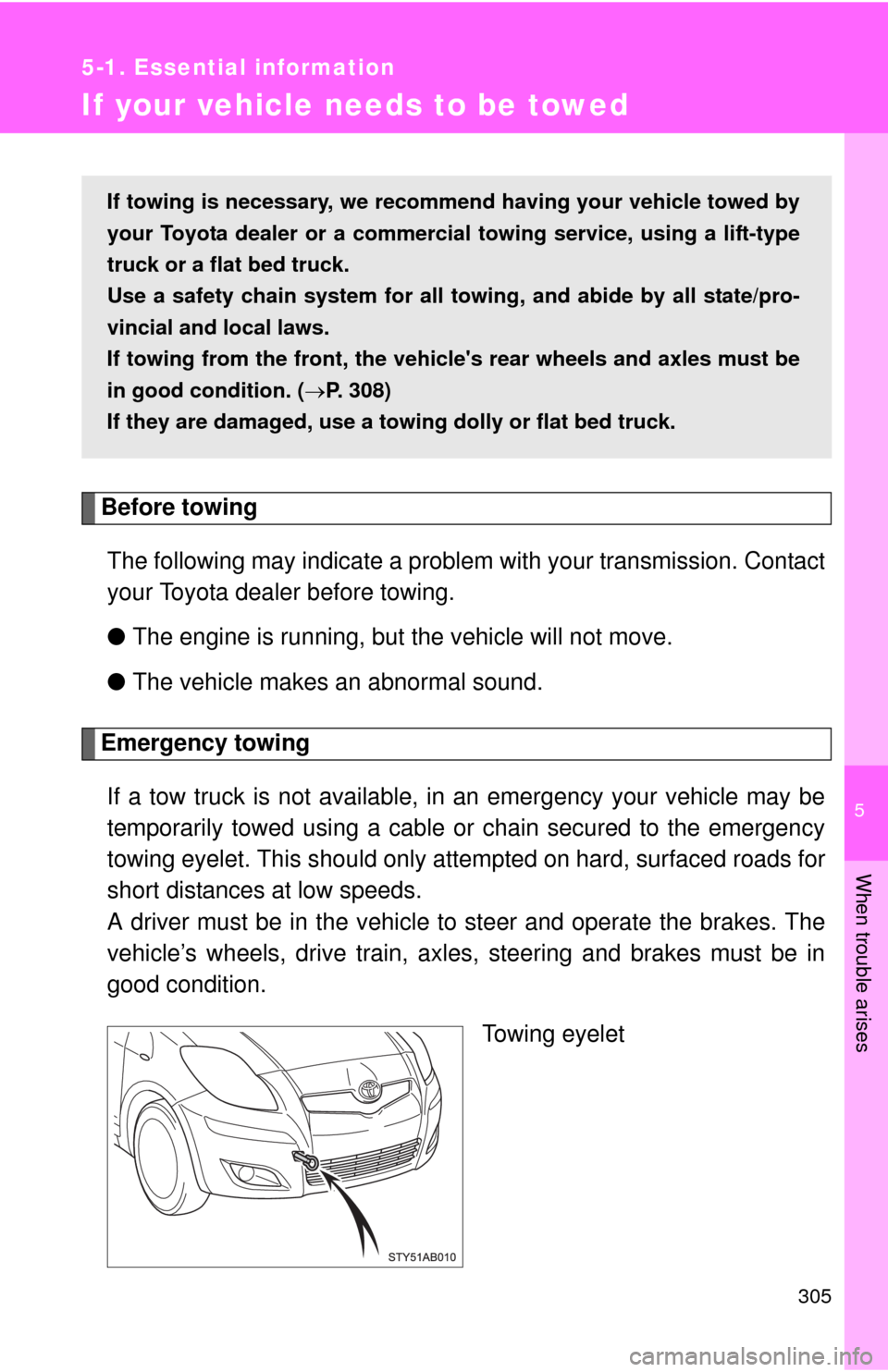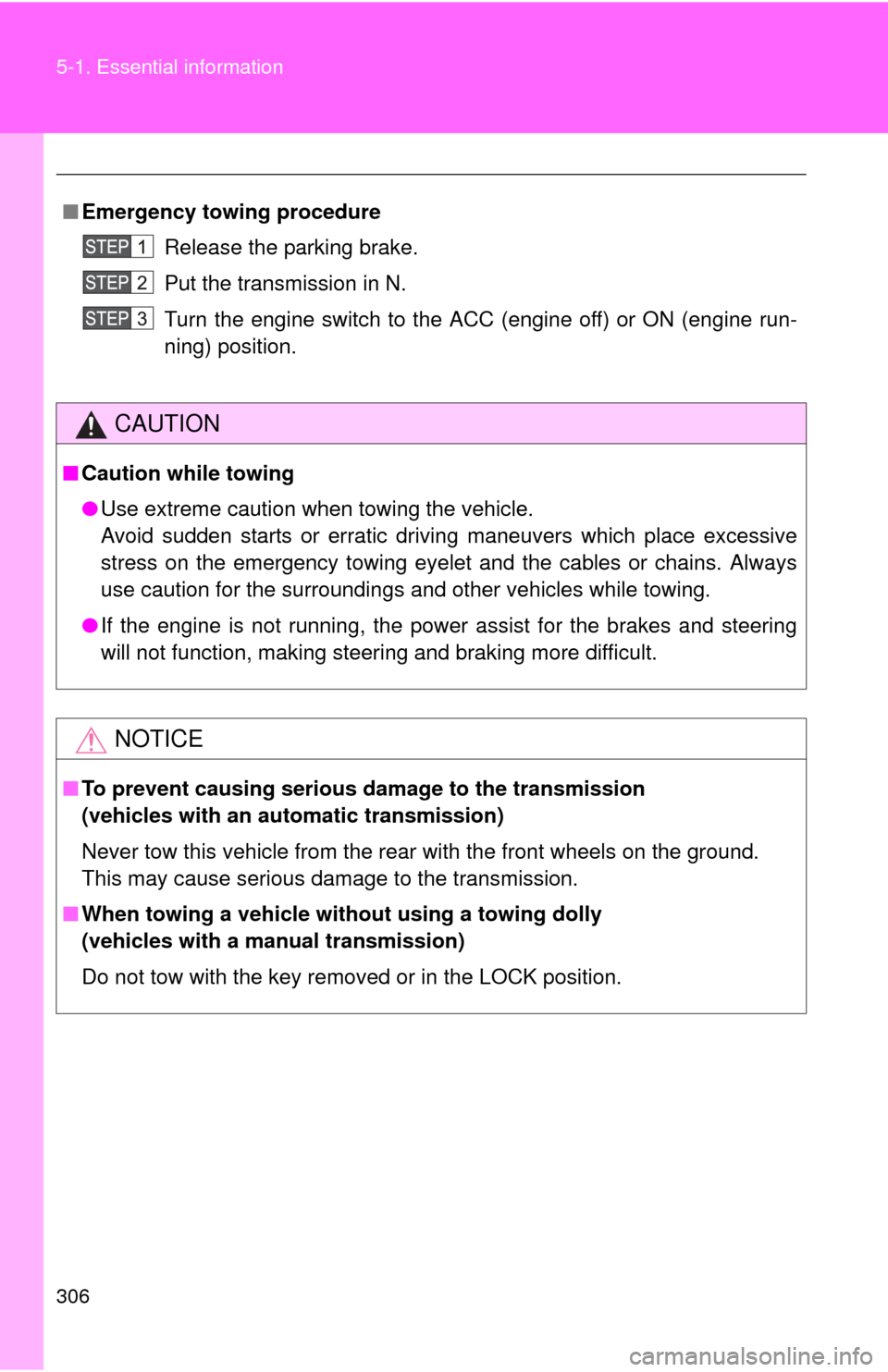Page 278 of 400
278
4-3. Do-it-yourself maintenance
Air conditioning filter
: If equipped
The air conditioning filter must be changed regularly to maintain air
conditioning efficiency.
■Removal method
Turn the engine switch off.
Open the glove box.
Push in each side of the glove
box to disconnect the claws.
Pinch the latches.
Remove the filter cover.
Page 283 of 400
283
4-3. Do-it-yourself maintenance
4
Maintenance and care
Checking and replacing fuses
If any of the electrical components do not operate, a fuse may have
blown. If this happens, check and replace the fuses as necessary.
Turn the engine switch off.
The fuses are located in the following places. To check the
fuses, follow the instructions below.
■Engine compartment
Ty p e A
1.Push the tab in and lift the
cover off.
2.Remove the cover.
Page 287 of 400
287 4-3. Do-it-yourself maintenance
4
Maintenance and care
Fuse layout and amperage ratings
■Engine compartment (type A)
FuseAmpereCircuit
1 ALT 120 ACharging system, HTR SUB2,
EPS, ABS1/VSC1, HTR, ABS2/
VSC2, HTR SUB1, RDI, DEF, FR
FOG, OBD2, D/L, POWER, RR
DOOR, RL DOOR, STOP and AM1
2 MAIN 60 AEFI, HORN, AM2, ALT-S, DOME,
ST, ECU-B, ETCS, HAZ, H-LP LH/
H-LP LO LH and H-LP RH/H-LP
LO RH fuses
Page 288 of 400
288 4-3. Do-it-yourself maintenance
■Engine compartment (type B)
FuseAmpereCircuit
1 AM2 15 AStarting system, multiport fuel
injection system/sequential multi-
port fuel injection system
2 HORN 10 A Horn
3 EFI 20 AMultiport fuel injection system/
sequential multiport fuel injection
system
4 SPARE 30 A Spare fuse
5 SPARE 10 A Spare fuse
6 SPARE 15 A Spare fuse
7 FR DEF 20 A No circuit
8 ABS2/VSC2 30 AAnti-lock brake system, vehicle sta-
bility control system
9 H-LP MAIN 30 A No circuit
10 ST 30 A Starting system
11 S-LOCK 20 A No circuit
12 DOME 15 AInterior light, personal lights, theft
deterrent system, audio system,
wireless remote control system
Page 303 of 400
When trouble arises5
303
5-1. Essential information
Emergency flashers ......... 304
If your vehicle needs to
be towed ........................ 305
If you think something is
wrong ............................. 311
Fuel pump shut off
system ........................... 312
Event data recorder ......... 3135-2. Steps to take in an
emergency
If a warning light turns on
or a warning buzzer
sounds... ........................ 315
If you have a flat tire......... 325
If the engine will not
start ................................ 337
If the shift lever cannot
be shifted from P............ 339
If you lose your keys ........ 340
If the vehicle battery is
discharged ..................... 341
If your vehicle
overheats ....................... 345
If the vehicle becomes
stuck .............................. 348
If your vehicle has to be
stopped in an
emergency ..................... 350
Page 304 of 400
304
5-1. Essential information
Emergency flashers
NOTICE
■To prevent battery discharge
Do not leave the emergency flashers on longer than necessary when the
engine is not running.
Use the emergency flashers if the vehicle malfunctions or is
involved in an accident.
Press the switch to flash all
the turn signal lights. To turn
them off, press the switch
once again.
Page 305 of 400

5
When trouble arises
305
5-1. Essential information
If your vehicle needs to be towed
Before towing
The following may indicate a problem with your transmission. Contact
your Toyota dealer before towing.
●The engine is running, but the vehicle will not move.
●The vehicle makes an abnormal sound.
Emergency towing
If a tow truck is not available, in an emergency your vehicle may be
temporarily towed using a cable or chain secured to the emergency
towing eyelet. This should only attempted on hard, surfaced roads for
short distances at low speeds.
A driver must be in the vehicle to steer and operate the brakes. The
vehicle’s wheels, drive train, axles, steering and brakes must be in
good condition.
Towing eyelet
If towing is necessary, we recommend having your vehicle towed by
your Toyota dealer or a commercial towing service, using a lift-type
truck or a flat bed truck.
Use a safety chain system for all towing, and abide by all state/pro-
vincial and local laws.
If towing from the front, the vehicle's rear wheels and axles must be
in good condition. (P. 308)
If they are damaged, use a towing dolly or flat bed truck.
Page 306 of 400

306 5-1. Essential information
■Emergency towing procedure
Release the parking brake.
Put the transmission in N.
Turn the engine switch to the ACC (engine off) or ON (engine run-
ning) position.
CAUTION
■Caution while towing
●Use extreme caution when towing the vehicle.
Avoid sudden starts or erratic driving maneuvers which place excessive
stress on the emergency towing eyelet and the cables or chains. Always
use caution for the surroundings and other vehicles while towing.
●If the engine is not running, the power assist for the brakes and steering
will not function, making steering and braking more difficult.
NOTICE
■To prevent causing serious damage to the transmission
(vehicles with an automatic transmission)
Never tow this vehicle from the rear with the front wheels on the ground.
This may cause serious damage to the transmission.
■When towing a vehicle without using a towing dolly
(vehicles with a manual transmission)
Do not tow with the key removed or in the LOCK position.